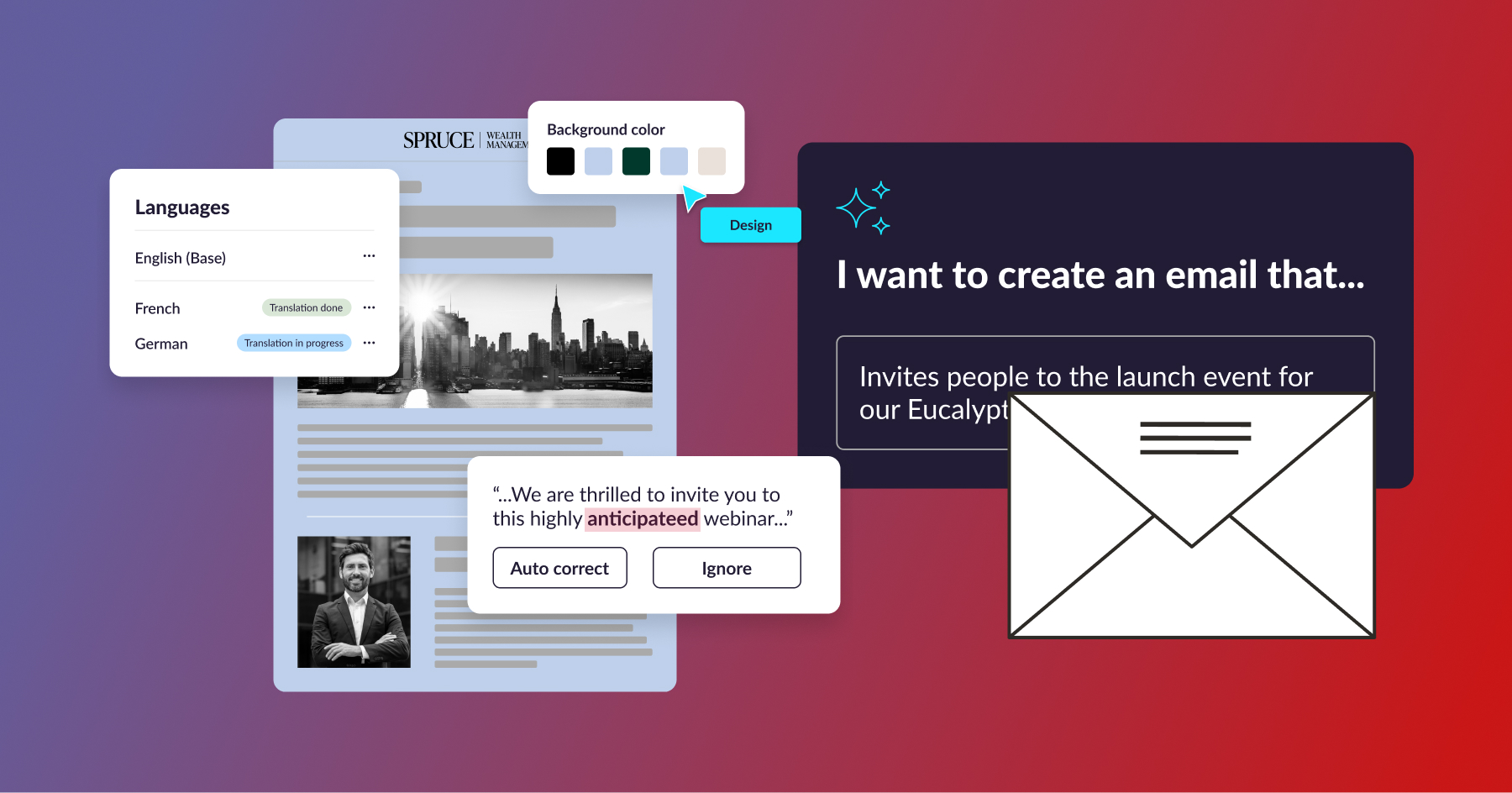Are you a marketing operations manager feeling the pressure of change happening in your role since COVID-19? Making adjustments to your team’s normal workflow and reallocating marketing spend is costing you time and resources you may have already been struggling to improve.
In this changing climate, generating qualified leads is more challenging than ever before. What you need is an easy-to-use automation tool that can deliver accurate data for lead scoring and sales nurturing in minutes.
Generating qualified leads is already hard, but with so much in motion, it can be even harder to defend that lead quality to external stakeholders. Not everyone loves lead scoring, but for complex customer journeys and justifying marketing spend, defensible lead scoring can be the difference between adding and removing someone from your team.
In this post, we’ll focus on setting up lead scoring in Eloqua and using it to maximize sales and marketing effectiveness.
What is lead scoring?
If you’re new to lead scoring or overheard the term in a meeting and immediately Googled “what is lead scoring?”—don’t sweat it. As they say, the best time to learn something new is yesterday. But the second-best time is right now. So what exactly is lead scoring?
Lead scoring is a formula for determining the likelihood of a prospect to complete an action, usually a conversion or purchase. If you’re like most B2B businesses, a conversion could mean a variety of actions, for example, a newsletter sign up, content download, demo request, or even a closed-won deal. The variety of conversions and length of time (cycle) it may take a prospect to complete one of the actions underscores the importance of using a lead scoring model. Because each one of these events has a different value to your business and each uniquely qualifies a prospect to make a purchase, it would be short-sighted to value them all equally.
Lead scoring models vary in complexity, but the goal is the same—focus marketing and sales resources (time, attention, budget) on the people most likely to purchase. The score indicates who’s most likely to buy, so rather than spreading precious focus across many leads, you can focus your attention on the leads most likely to take the desired action.
A quick example might help illustrate how it works.
Let’s use the example of a SaaS startup selling an internal communication tool for enterprises. Our target buyer is the director of employee engagement at a large business. As we set up our lead scoring, we identify four buckets of prospects, based on actions they’ve taken on our website.

This is admittedly an over-simplified example, but it illustrates the point. If we were to treat every single website visitor the same, in terms of nurture programs or re-marketing campaigns, then we’d waste valuable marketing time and resources on prospects much less likely to make a purchase from us.
Lead scoring allows us to segment customers based on how likely each of these groups is to make a purchase. Over time this data becomes increasingly accurate and we’re better able to predict the purchase behavior of a given customer segment by their lead score.
Marketing automation platforms like Eloqua have built-in lead scoring. Once it’s set up, a single team member can easily build and deploy lifecycle marketing programs.
Getting started with Eloqua lead scoring
Eloqua uses a lead scoring model that measures two factors:
Profile—This measurement collects data on a prospect’s demographic information such as industry, a particular company’s annual revenue, or a contact’s job role and purchasing authority. The prospect is then given a letter rating of A, B, C, or D.
Engagement—Eloqua’s lead scoring model also measures a prospect’s engagement, such as visits to a website, response to email marketing campaigns, and willingness to provide information on forms. Scores are given using a numerical value of 1, 2, 3, and 4.
Understanding and creating a lead scoring model in Eloqua
The best place to begin creating your lead scoring model is through a meeting with both marketing and sales teams. Understanding the perspectives from both groups will save you valuable time in creating the most productive model in Eloqua.
As previously stated, Eloqua Lead Scoring uses two factors in measuring whether a prospect will be a good fit for your sales goals.
When setting up your criteria for the measurement of a profile, consider your ideal customers. Who are you serving? Based on past data, which companies or individuals does the sales team confirm as highly likely to purchase?
Using our example company from before, let’s suppose we discover that marketing consultancies are a prime reseller for our software.
A leading sales goal for this year is to begin expanding our partner and reseller programs. When creating your criteria for profile lead generation, Eloqua recommends limiting the criterion to 3‒5 categories. Adding more will lead to diluted results.
A good starting goal for this example would be industry, job role, and geographic area:
- Industry—Marketing consultancies
- Job role—CEOs, Owners, Head of Business Development
- Geographic area—Nationwide
Next, marketing and sales must create criteria that measure the engagement of prospects.
Are you using effective email creation tools? Eloqua offers a criterion focused on whether potential clients are actually opening email during marketing campaigns. Again, focus on selecting a limited number of categories. Perhaps the most revealing focus selected should be the following:
- Visits to your website
- Email address collection
- Opening of a marketing email
Once you have a targeted selection of criteria that are agreeable to both the marketing and sales teams, it’s time to let Eloqua lead scoring do its work.
Analyzing the lead score
To understand the lead score for a profile, think back to grade school. An A is excellent, B is very good, and C is okay.
The engagement score follows a 1 through 4 ranking system, with 1 being the most qualified and 4 being the least. In our example, let’s say that Consultancy X receives a score of B2. What does this mean?
A score of B2 indicates the industry selected is a good fit. Maybe they are not currently reselling software to their clients, but they have historically high-performing sales numbers. They get a score of B.
Also, Consultancy X has recently responded to email marketing and visited your company’s website, receiving a score of 1 for excellent engagement. Consultancy X is a very good prospect and will be forwarded to the sales team for direct contact.
Let’s look at an A4 score. Consultancy Y has recently announced plans to update the marketing bundles they provide clients. Bingo. This is an example of an agency that’s primed to join our reseller program.
However, their engagement score is 4. This means that so far, the agency has not responded to your marketing emails or visited your website for more information.
Should you dump them as a prospect? No. An engagement score of 4 for this particular target means you need to do more research into their needs and email marketing that focuses on the quality and affordability of your software.
Weighting criteria in Eloqua lead scoring
Fine-tuning the data focus for each criterion will give you the most targeted results. Fortunately, the Eloqua interface offers the ability to add weighting to a particular criterion. The closer a prospect is to the weighted criterion, the more points it will receive.
For example, suppose you continue to evaluate whether to keep Consultancy Y as a prospect. You can establish a weight for the visits to your website based on advice from your sales team. You can also refine the weight to specify a total amount of visits, maybe two.
Your sales team may conclude that a weight of 50 should be given to website visits, a weight of 35 should be given for email registration, and another weight of 15 for the opening of a marketing email.
Refine criteria for your sales team
As your prospect moves through the sales funnel, their lead score will change. Increases in engagement with marketing campaigns or changes in job title can alter an individual score or provide data that supports redefining scoring criteria that produces a strong lead.
Going back to the A4 rating, your sales team has requested that leads only be forwarded when the prospect demonstrates an active interest in pages on the website that focus on the dimensions and pricing of your software.
It’s easy to add refinements to criteria. Within Eloqua, you can click on the established criteria and refine your focus by listing a predetermined allotment of visits to landing pages or page tags. You can also enter a determined amount of times the prospective client must open a particular page and assign a weighted amount for scoring points.
Do you offer live engagements in which prospective clients can physically view products? In our example for internal communication software, you can refine criteria to include attendance at virtual trade shows in which your software is on display.
Segmenting leads
One of the best reasons to use Eloqua lead scoring is its ability to help you determine where your leads are in their sales decision-making process. Segmenting in Eloqua lead scoring is most helpful in determining a marketing department’s next course of action for a lead.
Let’s use a B3 model to determine segmenting. Based on the profile measurement, the prospect has demonstrated a score of B. Criteria demonstrates that although the prospect is a major reseller of communication software, they do not currently sell or have plans to sell new software.
One reason you might want to keep the prospect’s information is the fact that they have visited your website multiple times, particularly those pages tagged for price comparison of internal communication software. You can work with your sales team to segment leads that will be forwarded to the sales team or kept for further nurturing of interest in your product.
For example, you may segment prospects with a B2 rating for immediate referral to the sales team if they have not only made multiple website visits but also provided contact information within form requests.
As for the B3 lead score, marketing and sales teams may agree that although there is an interest, based on visits to pricing pages, this lead requires further nurturing of interest through marketing campaigns before a direct sales presentation is brought for consideration.
The Eloqua lead scoring tool offers ease of use in optimizing data that leads to productive segmenting. Segmenting reduces wasted time and budgeting on leads for both marketing and sales teams.
Maximizing marketing effectiveness
Eloqua lead scoring offers an intuitive interface that makes redefining lead scores on the fly as easy as updating your criteria. If you haven’t taken advantage of Eloqua’s straightforward lead scoring, you’re missing out on a massive opportunity to maximize the efficiency of your marketing spend and leaving money on the table.


